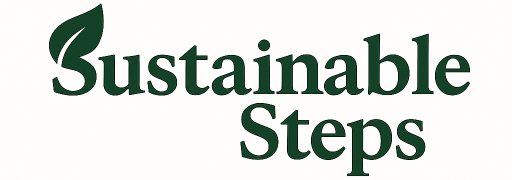Introduction
The modern workplace is evolving—and so are its responsibilities. In a world grappling with climate change and growing environmental concerns, the pressure is on businesses to step up their sustainability game. One powerful way to do that? Adopting zero-waste policies in the office.

While “zero-waste” may sound like an ambitious goal, it’s far from impossible. With the right strategies, tools, and mindset shifts, your office can dramatically cut down on waste, reduce its environmental footprint, and inspire a culture of sustainability among employees. Whether you’re a small startup or a corporate hub, this guide breaks down exactly how to implement zero-waste policies in your office environment—step by step.
What Does “Zero-Waste” Really Mean in an Office Setting?
“Zero-waste” doesn’t necessarily mean producing zero trash—it means designing systems to prevent waste from being created in the first place.
Key Principles:
- Refuse what you don’t need
- Reduce what you do use
- Reuse when possible
- Recycle what can’t be reused
- Rot (compost) the rest
In the workplace, this means rethinking everything from office supplies to breakroom habits to energy consumption.
Step-by-Step: How to Implement Zero-Waste Policies in Your Office
1. Conduct a Waste Audit
Start with what you have. Before making changes, analyze your current waste output.
Steps:
- Track the type and amount of waste for a week
- Identify common items in landfill bins (paper cups, plastic utensils, packaging)
- Categorize into recyclable, compostable, reusable, and landfill
Tip: Involve a small green team of employees to monitor and log waste trends.
2. Set Clear Goals and Communicate Them
Once you know your waste profile, set specific and measurable goals.
Example Goals:
- Reduce single-use plastics by 90% within 6 months
- Implement office-wide composting by Q3
- Eliminate landfill-bound lunch packaging by year-end
Communicate your mission:
- Send an internal memo or Slack announcement
- Include visual signage in break rooms and kitchens
- Offer a kick-off lunch-and-learn session to engage staff
3. Ditch Disposables: Go Reusable
Eliminating disposables is one of the quickest wins.

Easy Swaps:
- Paper cups ➜ Ceramic mugs
- Plastic bottles ➜ Refillable water stations + branded bottles
- Plastic utensils ➜ Stainless steel cutlery
- Paper towels ➜ Cloth towels or air dryers
Pro Tip: Offer small incentives for employees who bring their own reusable items.
4. Set Up a Robust Recycling System
Recycling is often poorly implemented—not due to laziness, but confusion.
Best Practices:
- Clearly label bins with visuals (landfill, recycling, compost)
- Avoid co-mingling waste
- Place bins in convenient, high-traffic areas
- Partner with a certified commercial recycling service
Bonus Idea: Add a Terracycle bin for hard-to-recycle items like pens and e-waste.
5. Go Paperless (or as Close as Possible)
Digital tools can massively reduce paper usage.
Paperless Tactics:
- Use e-signature software (e.g., DocuSign)
- Implement a cloud-based filing system (e.g., Google Workspace, Dropbox)
- Encourage digital meeting agendas and note-taking apps like Notion or OneNote
- Set printers to double-sided by default
Challenge: Try a “No Print Week” to reset old habits.
6. Rethink Office Supplies and Purchasing
Every item you order creates upstream waste—so choose wisely.
Sustainable Purchasing Tips:
- Buy from eco-certified vendors (look for FSC, Cradle to Cradle, etc.)
- Order in bulk to reduce packaging
- Choose refillable pens, markers, and ink cartridges
- Avoid plastic-wrapped supplies
Example: Replace Post-it notes with reusable whiteboard notebooks like Rocketbook.
7. Introduce Office Composting
Food scraps, coffee grounds, and even compostable packaging can be diverted from landfill.

Steps to Launch Composting:
- Set up a compost bin in the kitchen
- Use certified compostable bin liners
- Educate staff on what can be composted
- Partner with a local compost pickup service (or DIY if you have outdoor space)
Compostable items include:
- Fruit & veg scraps
- Coffee grounds & filters
- Napkins & paper towels (if unbleached)
- Biodegradable packaging (check certifications)
8. Green Your Office Culture
Zero-waste isn’t just about operations—it’s about mindset.
Ideas to Foster Engagement:
- Host monthly “Sustainability Spotlight” meetings
- Create a green rewards system (e.g., reusable item credits, eco-gift vouchers)
- Offer workshops on waste-free living or upcycling
- Celebrate milestones like “100 days without disposables”
9. Deal with E-Waste Responsibly
Electronics are a major waste source in office environments.
What to Do:
- Partner with certified e-waste recycling services
- Donate old devices to schools or charities
- Buy refurbished or modular tech when possible
- Set up a regular e-waste drop-off day for staff
10. Measure, Report, Improve
Track your zero-waste progress with metrics and employee feedback.

What to Track:
- Trash volume reductions
- Recycling & composting rates
- Reusable item usage (e.g., mugs instead of cups)
- Employee participation rates
Tool Tip: Use dashboards in tools like Airtable or Google Sheets to track goals visually.
Conclusion
Implementing zero-waste policies in an office environment isn’t just good for the planet—it’s a smart business move. From cutting supply costs to boosting employee morale, the benefits ripple throughout your organization. Start small with changes like reusable mugs and clear bin signage, and scale up as your team embraces the shift. With commitment, creativity, and collaboration, your office can become a beacon of sustainability and a model for others to follow.
